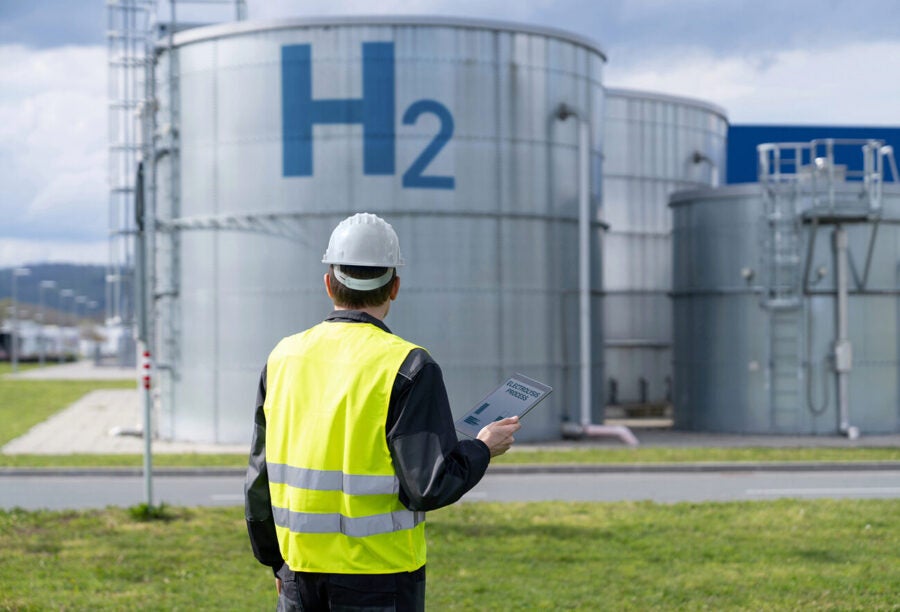As April 2024 wound up, the Biden administration released rules that aim to expedite infrastructure projects and require federal agencies to get stricter in weighing the potential impacts on the climate and low-income communities before approving projects like highways and oil wells.
That should bring cheer to participants on a Penn panel discussion during Energy Week in March, who called for more “political will” above all else to combat climate change and meet the United Nations goal of limiting global warming to below 1.5 degrees Celsius above pre-industrial levels of the late 1800s. That goal can be achieved if emissions are reduced by 45% by 2030 and reach net zero by 2050.
The latest rules follow the passage of the 2022 Inflation Reduction Act, or IRA. The climate and energy provisions in that act will call for an outlay of $1,045 billion over 10 years, according to estimates by the Penn Wharton Budget Model.
“While the IRA provides the carrot — incentives for renewable energy and clean energy — we also need the stick [in terms of] disincentives for fossil fuel energy,” said Michael Mann, a Penn professor of earth and environmental science, during the panel discussion, which was titled “Electrifying Everything?” Mann is also director of the Penn Center for Science, Sustainability, and the Media, a co-sponsor of the event with the Wharton Climate Center, which is part of Wharton’s ESG Initiative. The panel was moderated by Sarah Light, Wharton professor of legal studies and business ethics, who is also faculty co-director of the Wharton Climate Center.
Why Electrify Everything?
According to Mann, the climate change goals are achievable only by transitioning the energy infrastructure away from fossil fuels to an electricity-driven system. Alongside, the electric grid must be decarbonized “so that the electricity that powers our infrastructure doesn’t generate planet-warming carbon pollution,” he added. Mann noted that the U.S. must go beyond the IRA’s target of a 40% reduction in U.S. carbon emissions by 2030, because it has logged more carbon pollution than any other country. “We have to bring carbon emissions down by 50% this decade and down to zero by mid-century.”
“While the IRA provides the carrot — incentives for renewable energy and clean energy — we also need the stick [in terms of] disincentives for fossil fuel energy.”— Michael Mann
“Electrify everything is a reasonable approach because that’s how you can make your home heating cleaner relative to burning gas or fuel oil, and make automotive transportation cleaner,” said Patrick Verdonck, founder at Verdonck Partners, a renewable power advisory firm.
The Green Hydrogen Imperative
Not everything can go green with electrification, such as air travel, Verdonck pointed out. Heavy trucking, steel refining, cement, and fertilizer manufacturing also defy electrification. While those industries use energy in the form of fossil fuel-based molecules, he said “it’s important that we think about green molecules” such as green hydrogen as an integral part of the decarbonization agenda. He pointed out that the cost of power today from green electrons is cheaper in many cases than it is from coal and gas. “It has already happened in some places in the U.S., where you can make green power cheaper than dirty power.”
While hydrogen does not generate carbon emissions, it can be produced using either fossil fuels or renewables. Incidentally, that may be one reason for hydrogen’s bipartisan appeal, as a Wall Street Journal report noted. But green hydrogen, which is made using renewables, is the electron worth pursuing, according to Jacob Susman, CEO and founder of Ambient Fuels, a green hydrogen developer.
Susman explained why the green hydrogen molecule is a potential game changer. “You can store a molecule much more easily. You can build pipes in the ground, and you can move it around.” It can be used in a range of industries that are the hardest to decarbonize: cement, steel refining, ammonia, glass, chemicals, pulp and paper, heavy road transport, aviation, and shipping.
Buy-in from corporations is critical to realizing the benefits of green hydrogen in decarbonization, Susman said, and he noted that some companies are beginning to show interest in it. Other challenges on that path are the construction of hydrogen pipelines and making it cheaper to produce green hydrogen.
Challenges to Electrifying Everything
The goal of electrifying everything of course will call for more generation, but it faces roadblocks in the permitting regulations that govern transmission and interconnection, according to Wharton lecturer Michael Panfil, who teaches risk analysis and environmental management.
Panfil pointed out that permits for clean energy transmission lines could take up to five years, unlike for a natural gas line. “There’s asymmetry. If you want to build a transmission line, you have to achieve alignment from the local up to the federal level,” he said. “The core challenge continues to be that the regulatory framework is designed for yesterday, not today.”
“The core challenge continues to be that the regulatory framework is designed for yesterday, not today.”— Michael Panfil
Verdonck added: “Fundamentally, the way the U.S. is organized is that all powers reside locally at the town. What’s done at the town goes to the county, the state, and federal levels. You may have a huge project where a local town has permitting authority. And those people may not always have the right tools, the right background, or even the means to hire the right consultants. We need to be able to take a step back and say, ‘What do we really need here as a society?’ Those decisions can be better made at a higher jurisdiction.”
As it happens, the federal government is addressing those obstacles; the Department of Energy is making efforts to reform and update the rules governing clean energy investments, Panfil pointed out. The Biden administration’s Permitting Action Plan, which was released on April 30, is a step in that direction.
Verdonck listed other to-do items on the path ahead for promoting greater electrification: Energy storage has to be made cheaper. Volatility in power consumption must be managed to make it cost-effective. Energy policy must address tradeoffs between “the good of having green electrons versus the impact that it has on local communities” by building local power stations and new transmission lines. At the regional grid interconnection level, federal and state governments must work towards “equal distribution of the benefits and the costs across society, and make sure one group is not more disadvantaged than the other.”
Everybody could do their part towards decarbonization, such as by using a hybrid car or renewable electricity in their homes, according to Susman. “It is the lowest hanging fruit in decarbonization.”



